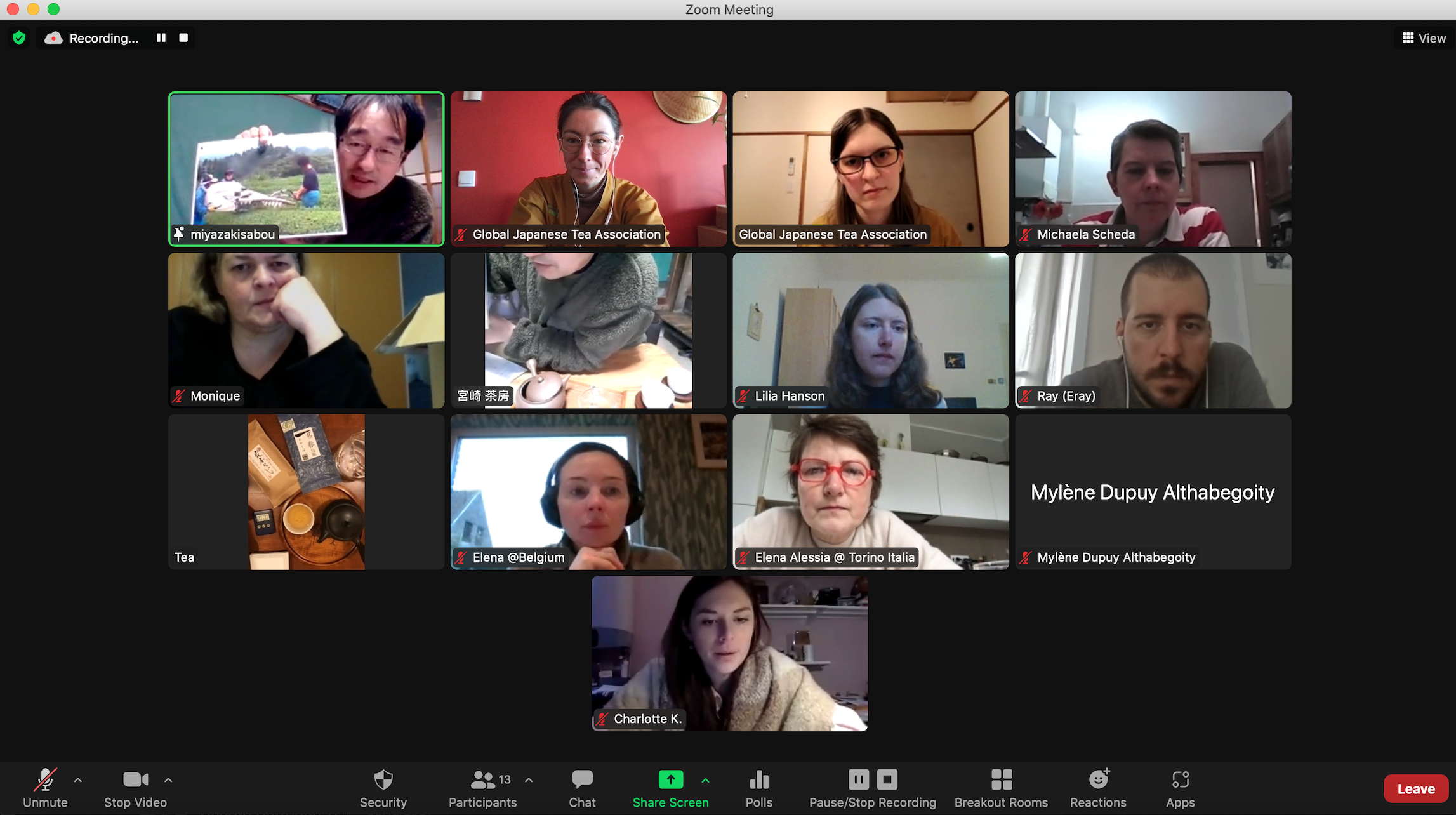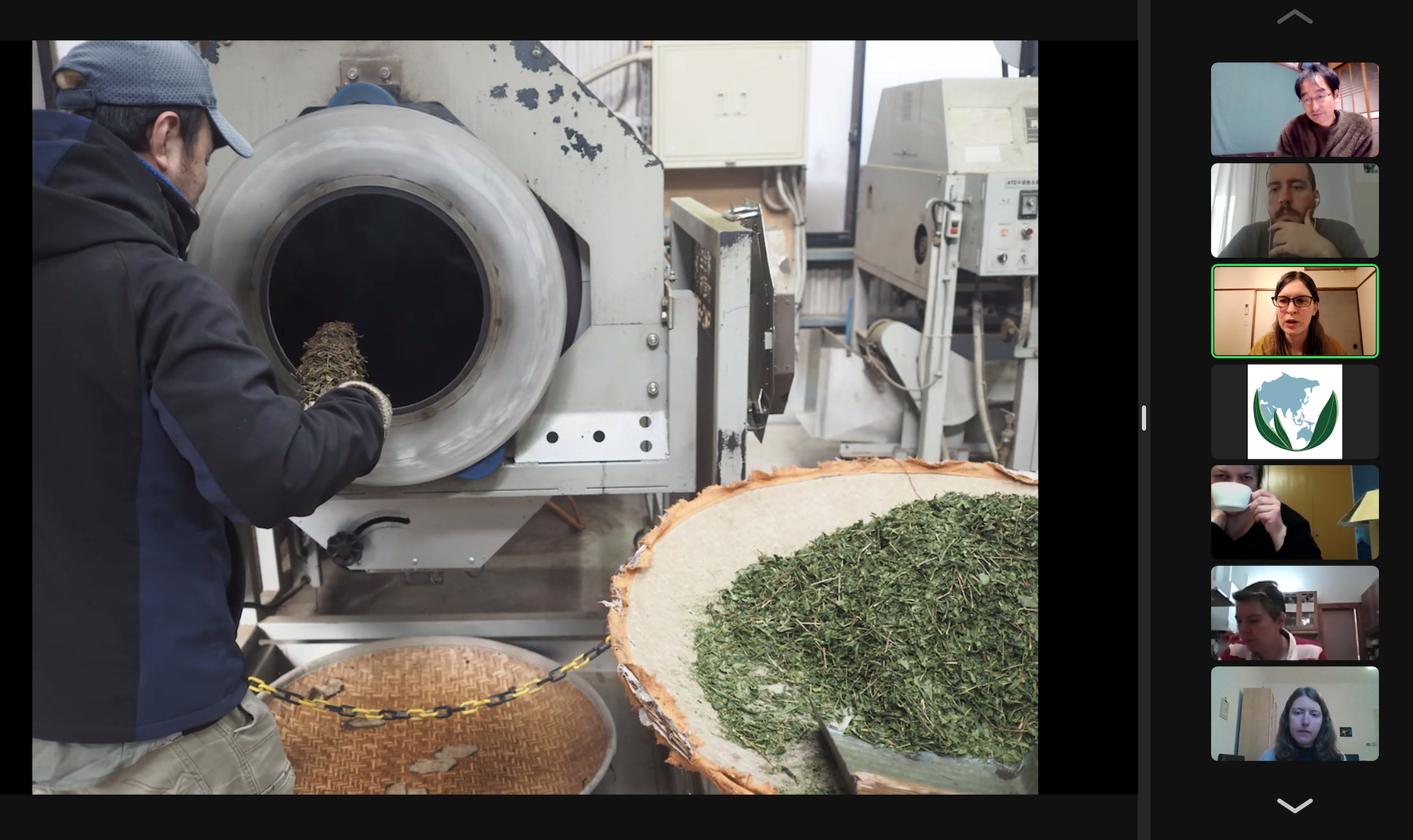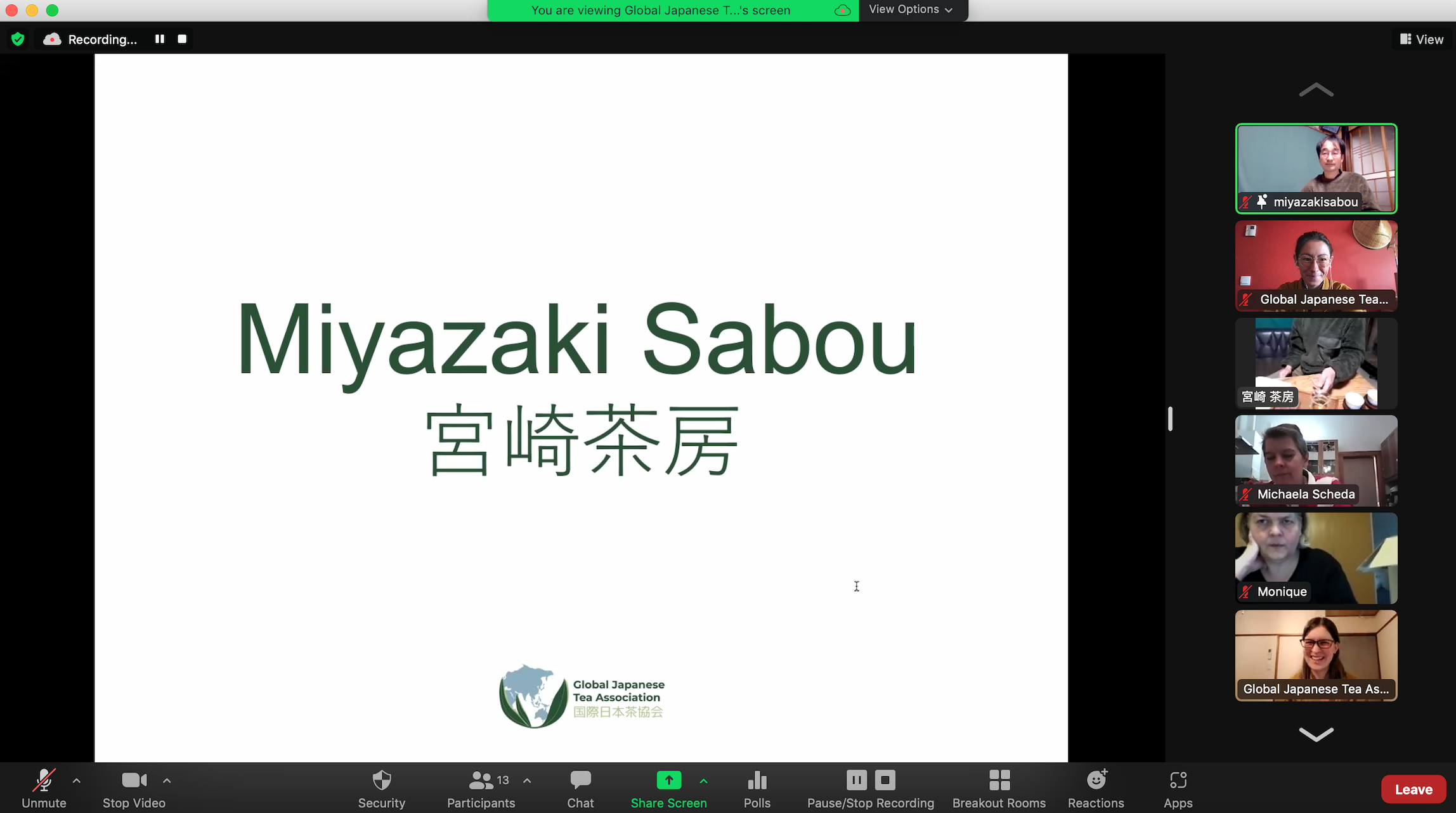On the 26th of January we held the first “Meet the Tea Farmer” event of this year. The guest was Akira Miyazaki of Miyazaki Sabou, from Gokase, Miyazaki prefecture. Twenty tea friends joined the two sessions from all over the world (USA, Canada, Indonesia, New Zealand, France, Turkey, Spain, Belgium, Italy, Austria, Netherlands). Together with Miyazaki-san we tried a very floral hojicha and an oolong.
Despite being a small tea farm, Miyazaki Sabou has lots of recognition, in Japan and abroad. They got the Emperors Award and the Japan Agricultural Ministry Prize, that were mainly given for organic farming. The location of Miyazaki Sabou, Gokase, is a mountainous area where only hand-held harvest machines can be used. Moreover, Miyazaki san still uses small processing machines to make his teas: half of the usual size used nowadays. About 40 years ago, his family was among the first to switch to organic cultivation. At the time, a friend of his mother passed away due to pesticides, so it was a turning point to decide to go organic. But organic farming is so labour intensive compared to conventional, that made the other people around doubt of the choice. There is a word in Japanese, “kuroshi”, it means dying from overwork, from exhaustion. They were afraid that if did not die from pesticides, they would die from the too big workload. But nowadays Miyazaki Sabou has become a bigger team: they have people helping during harvest that return year after year; quite a few people have been working together for long time now, they have become a team. Two of them have even started their own tea farm in the area. Additionally, more people of the region are making organic teas.

This Meet the Tea Farmer session started with the hojicha tasting. Made from a blend of cultivars (including Minami Sakaya and also zairai), this tea can be made twice a year and this one in particular is from summer harvest. Miyazaki-san suggested to warm the tea pot and cups first; then he used 4 grams of tea for the 150ml kyusu and suggested to use boiling water, letting the tea steep for one and a half minutes. This tea is quite unique and has a very delicate and soft taste: the roasting temperature of this hojicha is lower than usual – around 145ºC – when normally hojicha is roasted at around 180ºC. Miyazaki-san does it this way to preserve the floral aroma in the tea stems. But it did take some time for the tea farmer to create this tea. The idea came up one day when going back to the tea field after harvest: he noticed that the recently cut stems had a floral aroma. So he thought about making a tea out of it! He also consulted with a specialist from China, who suggested to roast the tea. All in all, it is quite difficult to make, it takes lots of effort and time. But the unique taste and aroma are worth it!

The second tea we tasted was an oolong. Very different from the previous tea. The process for this tea is quite long. The tea leaves at first need to stay for 30 minutes in the sun outside, then need to be moved indoors and left withered in the shade for a few hours. Then the leaves are oxidised further using a machine for about 13 hours. Only after the oxidation is visible on the leaves the morning after, the tea is heated again and finally rolled and dried. This oolong is made from a local cultivar called Takachiho, that is normally used to make kamairicha. It is quite interesting, as it is known to have more spicy herbal taste when making green tea – but in oolong turns out very floral. Miyazaki-san has been doing this oolong now for 10 years; after lots of effort and trials at the beginning, he now has reached the confidence with this tea and can replicate its taste year after year. When brewing this tea, just like for the hojicha, Miyazaki-san prefers heating the tea-ware first. Then he suggested to use 4 grams of oolong in a 150ml kyusu and brew it for one minute with boiling water.

At Miyazaki Sabou, about half of the production is kamairicha. All the rest is.. experimenting! Miyazaki-san likes to experiment and also collaborate with others in the region and also from abroad. Some collaborations are with specific purposes, like one with a tea machine maker. Some other times is just by coincidence: people travel, stop by and ask. He is now experimenting with gaba oolongs and even puerh making! Whether experimenting or replicating traditional teas, he always tries his best to make tea that is good for the health and the body. Thank you Miyazaki-san for making such incredible teas!
PS: if you are curious to know more about Miyazaki Sabou, go read the article by our member Alba on her recent visit to the tea farm!


